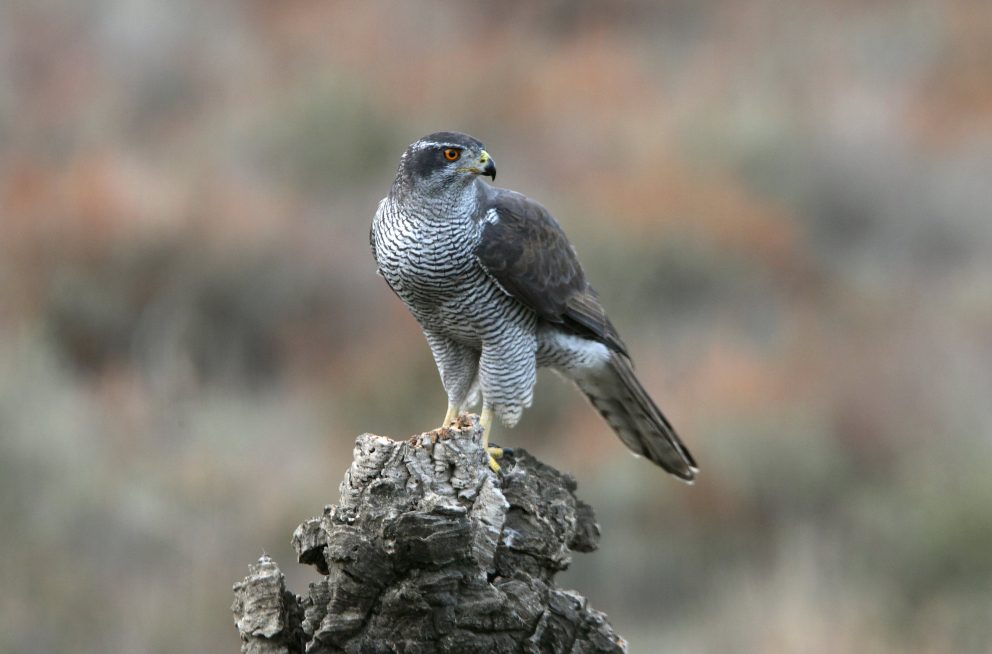- SCIENTIFIC NAME
- Accipiter gentilis
- CLASSIFICATION
- Bird
- LIFE SPAN
- 3-11 Years
- SIZE
- 21-25” | 1.3-3lbs
- STATE CONSERVATION STATUS
-
- Priority Species
- FEDERAL CONSERVATION STATUS
- Least Concern
- GAME STATUS
- Non-Game
- GAME TYPE
- None
- Washoe
- Humboldt
- Pershing
- Churchill
- Mineral
- Lyon
- Douglas
- Carson City
- Storey
- Elko
- Lander
- Eureka
- White Pine
- Esmeralda
- Nye
- Lincoln
- Clark
Habitat & Range
Northern Goshawks can be found breeding in northeastern, eastern, central, and western Nevada, and in high elevations in Southern Nevada. During the winter you could find a Goshawk anywhere in the state. They like to forage in open sagebrush near running water sources and aspen stands. Preferred nesting sites are in dense old-growth forests.
- Alpine forests of the Sierras
- Rivers and streams
- Upland Forests
Threats
- Habitat Degradation
- Habitat Loss
Natural History
Northern Goshawks are silent and swift hunters. These accipiters are forest dwellers, preferring old growth douglas fir and pine forests. Canopy cover in these forests is important for perching sites, but they are able to be versatile in Nevada and can still thrive in sagebrush steppe habitat. This is due to their speed and ability to quickly ambush prey. Goshawks will typically select breaks in the forest or riparian corridors for their nesting sites. For them, it is important that water is nearby, and that they can easily make their way to and from the nest or defend it from attackers. Female Goshawks do the majority of nest building or will repair the existing nest with little help from the male. Goshawks typically maintain a lifelong pair bond, and the female puts in the work to attract a mate through vocalizations and aerial displays. They produce one brood a year with two to four eggs. The female is responsible for the majority of incubation, and eggs will hatch after about 35 days and fledge after about 50 days. After fledging, the young hawks may remain dependent on their parents for food for a couple of weeks. Due to Goshawks being incredibly defensive of the nest site, it is best to view goshawks from a distance as to not disturb their nest. They have been known to attack humans that come too close. Northern Goshawks have few predators, however their chicks are more susceptible to predation. In Nevada, chicks may be predated by pine martens eating eggs, or even larger birds of prey such as great-horned owls and eagles. The prey of Northern Goshawks is more varied than other accipiters. Like most accipiters, these hawks do prey on birds, but they will also eat mammals, snakes, insects, and sometimes carrion. They will also eat large birds such as several species of grouse, crows, woodpeckers, and Steller’s Jays. To accomplish a successful kill, they may fly forcefully down from their perch feet first onto prey, or stalk them on foot. They will often leave evidence of their bird prey in feather piles below a ‘plucking perch’ that is usually not far from their nests.
Fun Facts














